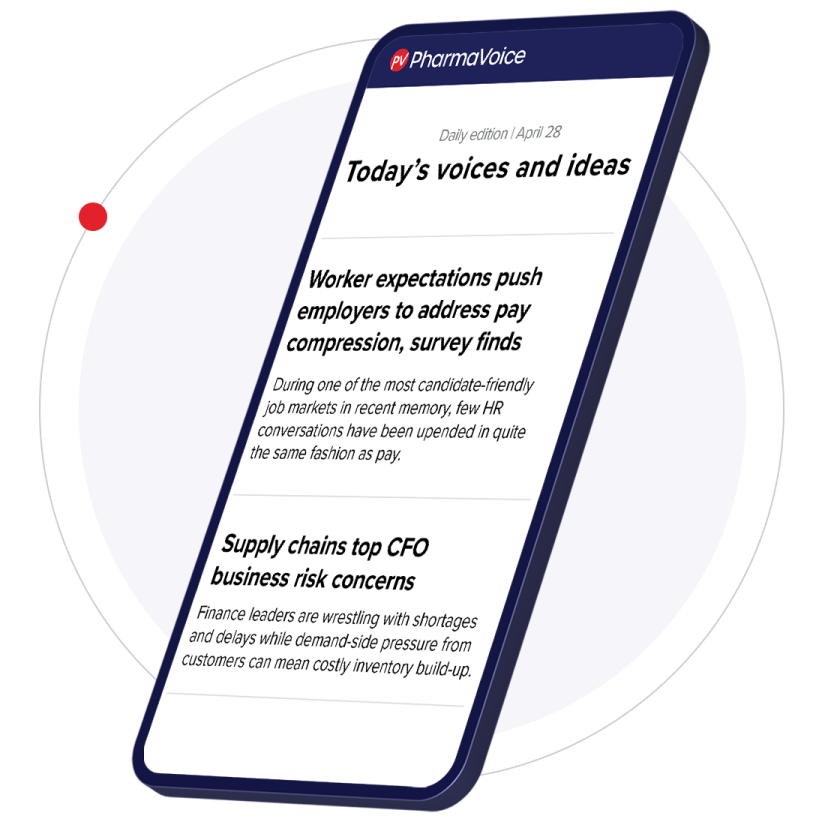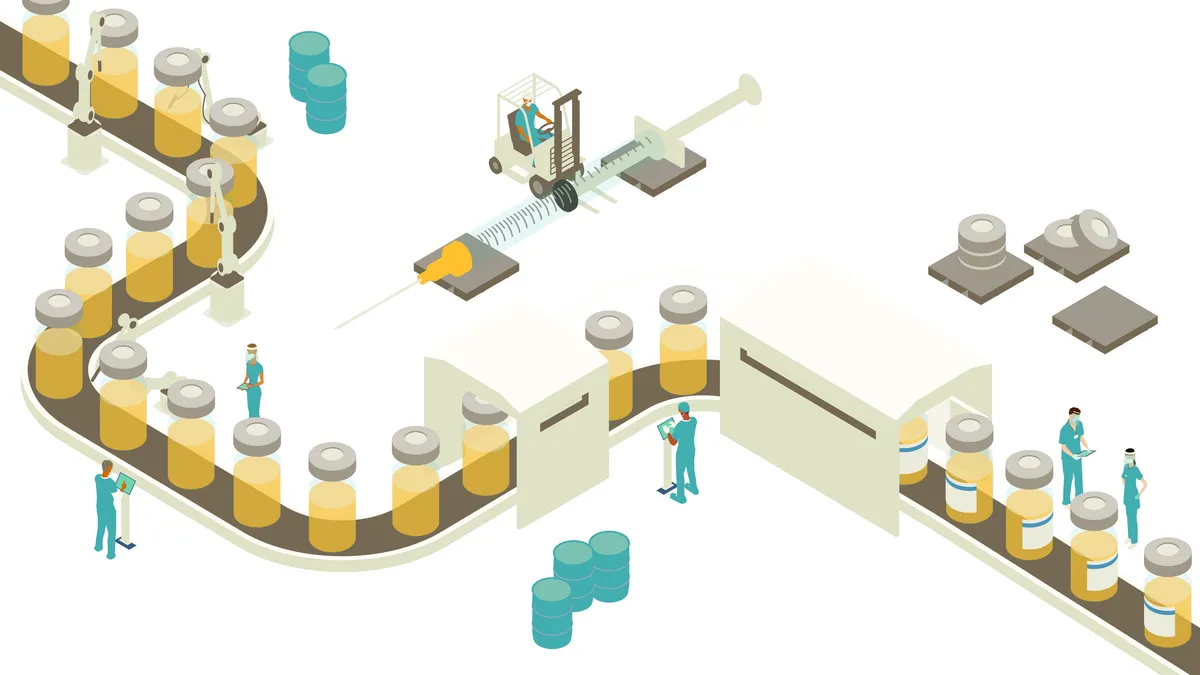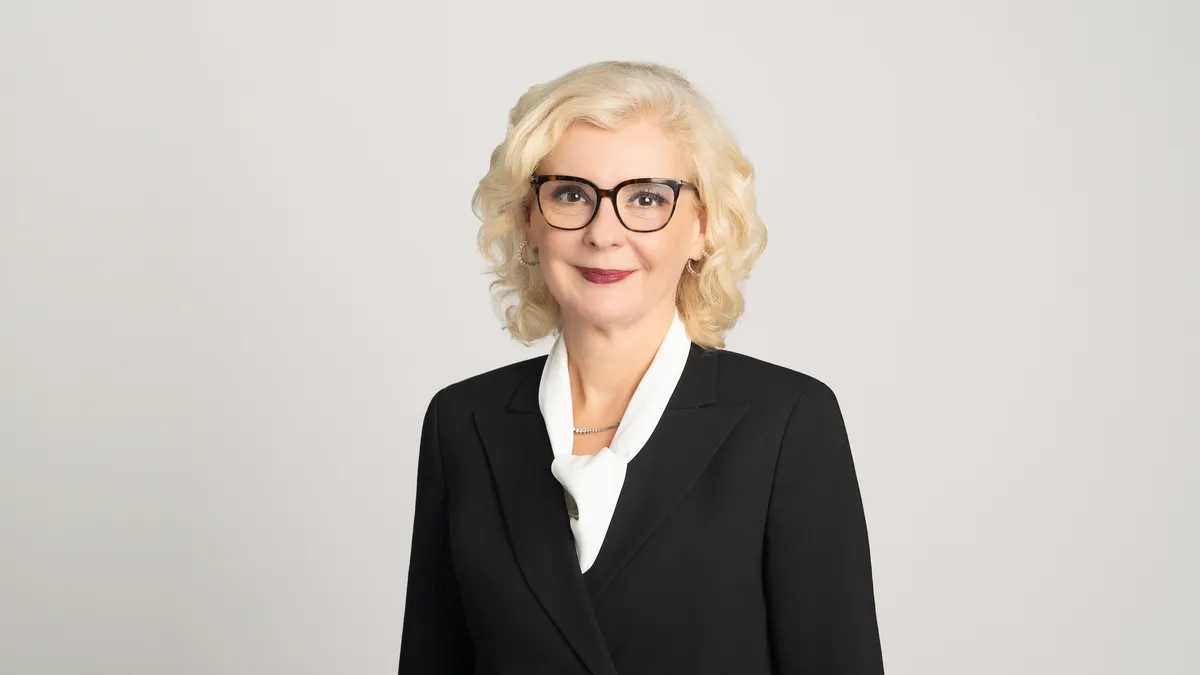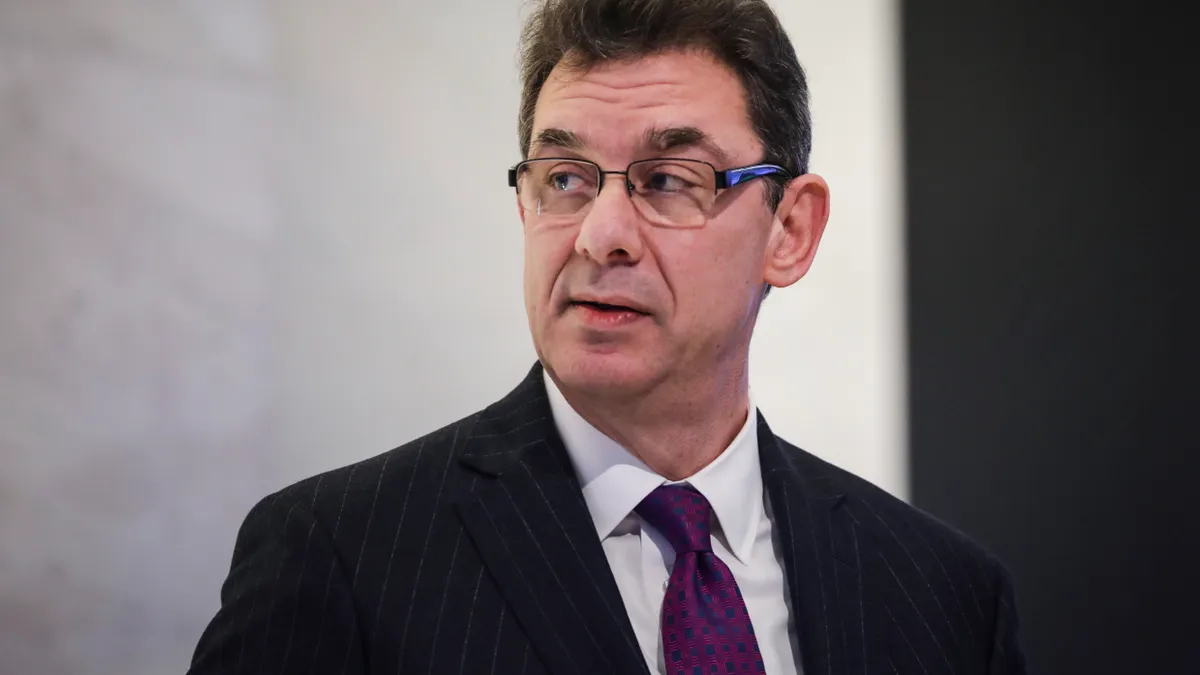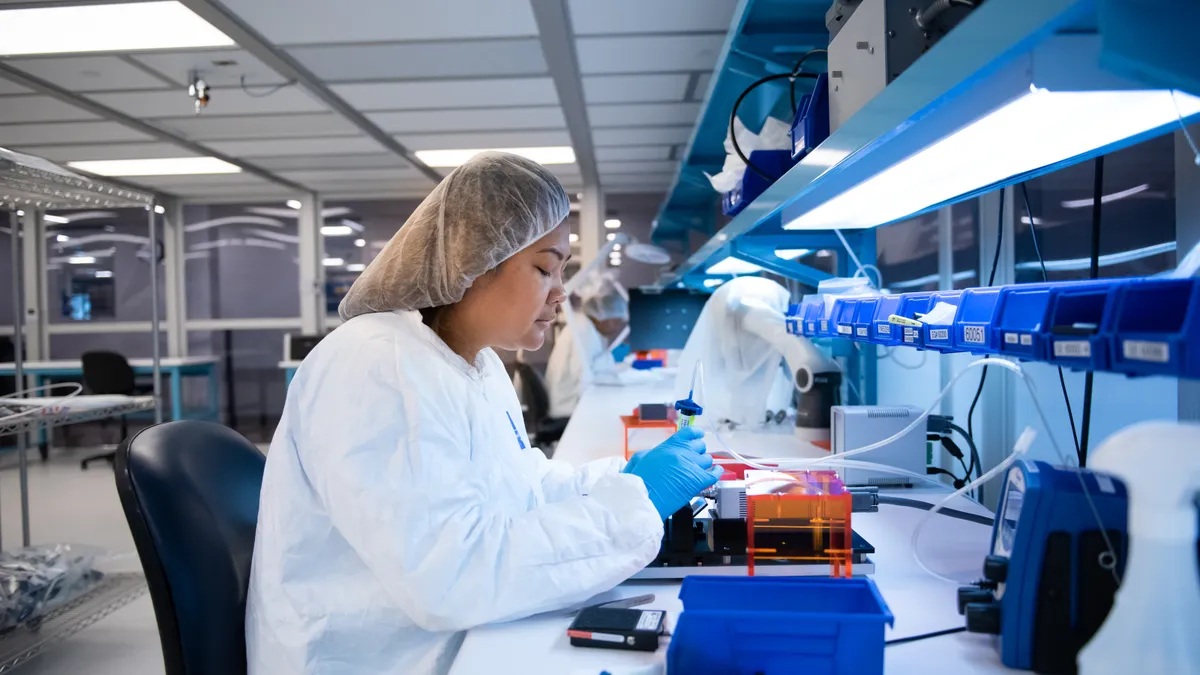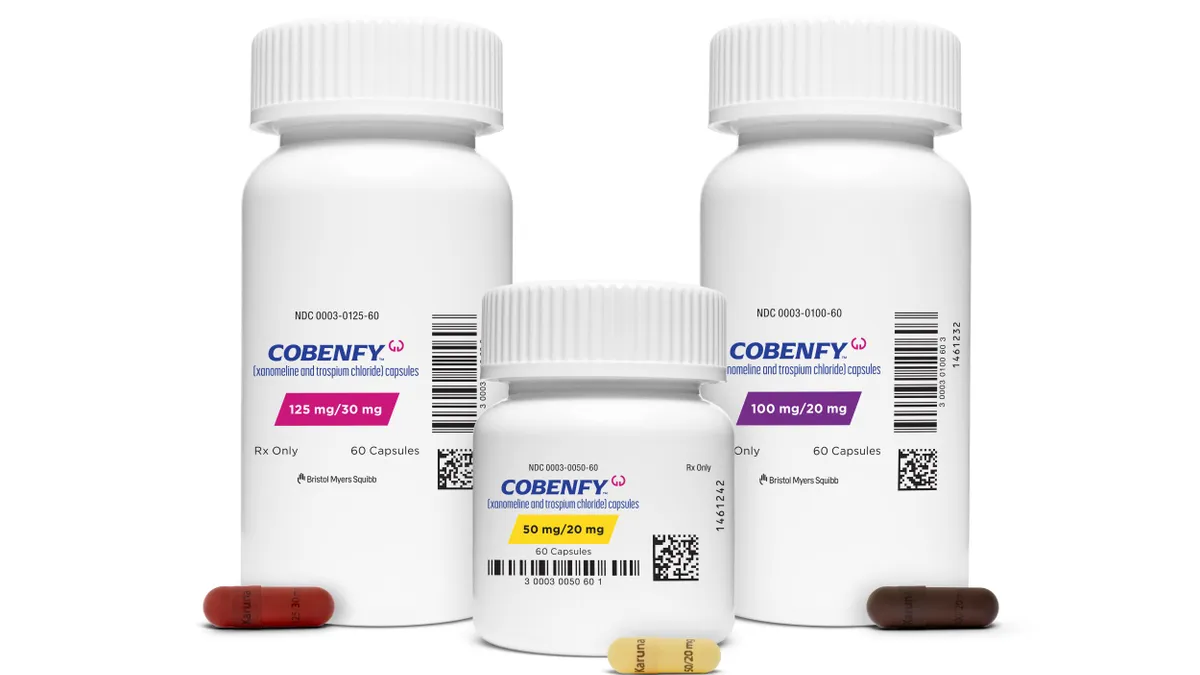Scientific breakthroughs. Upcoming patent cliffs. Stagnant M&A. Lingering political unease. And a whole heaping dollop of uncertainty.
The ups and downs of the pharma industry last year have carried through into 2025, and although certain milestones like the outcome of the U.S. election have put some questions to rest, Big Pharma still faces a series of unknowns that have impacted their M&A strategies.
So far, reported earnings for the fourth quarter and full year suggest executives are going back to the basics to overcome the challenges of the year ahead, including a focus on smaller, more consistent deals as well as pumping up new meds to replace the losses of yesterday’s bestsellers. Here’s what some of those CEOs had to say in the last couple weeks.
“That's where we are able to create value — larger opportunities have to be seen more like outliers.”

Joaquin Duato
CEO, Johnson & Johnson
J&J’s CEO provided insight into the company’s wide net for acquisitions, last year picking up Ambrx, Proteologix and Yellow Jersey Therapeutics, each with valuations of $2 billion or less. Last month, J&J kicked off 2025 with a $14.6 billion purchase of Intra-Cellular Therapeutics, larger than any pharma deal in 2024.
But is J&J aiming for more of those bigger deals as the year goes on? Not necessarily, according to Duato. Deals like the Intra-Cellular acquisition are opportunistic, he said, and while they create value as outliers, they don’t make up the company’s bread-and-butter business development strategy. In many ways, that reflects a wider trend in the industry, with pharmas placing smaller bets on earlier-stage assets that serve to build up a pipeline over time as opposed to in one fell swoop.
And as J&J’s pharma revenues feel the weight of competition to the blockbuster immunology drug Stelara, the pharma juggernaut managed to pour $17 billion into R&D last year and $32 billion into acquisitions in the last 12 months, which includes the buyout of Intra-Cellular. Those commitments illustrate the company’s full-steam-ahead approach to Stelara competition and other headwinds like Medicare redesign.
“Our strategy here was to elevate the standard of care for patients and ultimately would drive a rapid return to growth for the company beyond Humira. And that's exactly what we've been able to execute. That strategy has played out.”

Rob Michael
CEO, AbbVie
AbbVie faces some of the same headwinds as J&J in terms of overcoming the loss of a major blockbuster, but for the seller of the immunology flagship Humira, those winds blew a little harder — in 2022, Humira represented more than a third of AbbVie’s overall revenues, whereas in the same year, Stelara made up a much smaller portion of J&J’s total sales. With those big shoes to fill, the company has scrambled to bring patients over to its new meds Skyrizi and Rinvoq, and that bet is paying off, CEO Rob Michael said.
Skyrizi and Rinvoq are now expected to bring in almost $24 billion in revenue this year, Michael said on the earnings call last week, a growth of $6 billion from last year that would surpass Humira’s peak revenue of just over $21 billion in 2022 before competition became an issue.
“We have the replacement power to consistently grow through the end of the decade.” Vasant Narasimhan, CEO, Novartis

Vasant Narasimhan
CEO, Novartis
Novartis faces a big patent cliff for its cardiovascular drug Entresto this year, and generic competitors will likely tear revenue down quickly. But the company has been growing its pipeline and, according to a report in the Wall Street Journal, looking to do more in obesity to fill those shoes.
But those opportunities won’t come easy, CEO Vasant Narasimhan said, and Novartis is likely to first stick with its growing expertise in RNA, cell and gene therapies. The Swiss drugmaker is working on its own obesity drug, and something would need to be very special to stand out as an acquisition target in that space, which is in very high demand.
That “replacement power” is what Narasimhan referred to in the company’s earnings report last week, particularly in clinical trial readouts that will be ready in the next few years. Meanwhile, the company is looking to achieve sales growth above 5% through 2029, outpacing generic competition impacts with a pipeline that provides “protection well into the 2030s,” he said.
“While the rapid change in the Chinese market for Gardasil has caused a short-term headwind for our company, our overall business is healthy and growing.”

Robert Davis
CEO, Merck & Co.
Merck & Co. is facing a tough time in 2025 with a major headwind for sales of the HPV vaccine Gardasil in China and the question of incoming competition for the cancer drug Keytruda, which was the bestselling treatment in the world last year.
Merck had once expected to rake in $11 billion from Gardasil by 2030, but with low sales in China, that target has gone out the window, CEO Robert Davis said the Chinese landscape for the vaccine is “challenging,” but other aspects of the business will carry the weight. Particularly when it comes to Keytruda’s loss of exclusivity by the end of the decade, the company is looking at “a hill versus a cliff.”
“Our COVID-19 portfolio will continue to be a predictable and durable contributor to our business.”

Albert Bourla
CEO, Pfizer
In 2020, Pfizer achieved a major feat in developing the first approved COVID-19 vaccine, bringing billions of doses to the world. As the pandemic subsided, that star fell to earth as quickly as it rose. Now, executives believe that volatility is behind them as revenues stabilize. In the last year, the company actually reported better-than-expected sales for both the vaccine and the antiviral pill Paxlovid.
However, because COVID products aren’t expected to be the only contributor to Pfizer’s future success, the company is using its cash position to pump up the pipeline in oncology and other areas where it hopes to be an even stronger player in the years to come, Bourla said. CFO David Denton said on the call that the company could have between $10 billion and $15 billion in business development firepower in 2025 “if we chose to focus on that area.”




